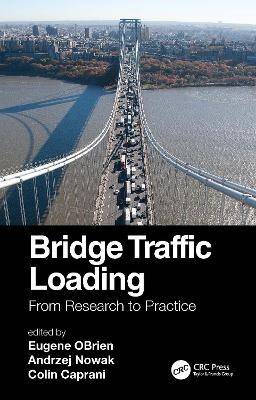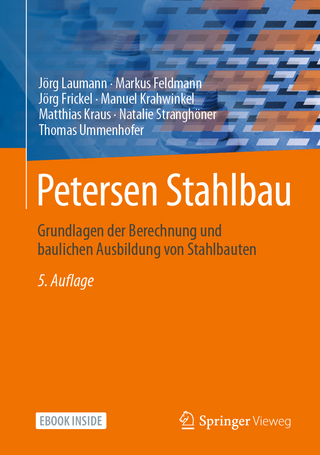
Bridge Traffic Loading
CRC Press (Verlag)
978-1-032-10136-1 (ISBN)
There is considerable uncertainty about what level of traffic loading bridges should be designed for. Codes specify notional load models, generally to represent extreme levels of normal traffic, but these are often crude and have inconsistent levels of safety for different load effects. Over the past few decades, increasing quantities of reliable truck weight data has become available and it is now possible to calculate appropriate levels of bridge traffic loading, both for specific bridges and for a road network.
Bridge Traffic Loading brings together experts from all over the world to deliver not just the state-of-the-art of vertical loading, but also to provide recommendations of best-practice for all the major challenges in the field – short-span, single and multi-lane bridge loading, dynamic allowance and long-span bridges. It reviews issues that continue to be debated, such as which statistical distribution is most appropriate, whether free-flowing or congested traffic governs and dealing with future traffic growth. Specialist consultants and bridge owners should find this invaluable, as will regulators.
Eugene O’Brien is Professor of Civil Engineering at University College Dublin. He has previously worked in industry and led the study that resulted in an increase in the allowable weights of trucks in Ireland. He has worked on most aspects of Bridge Traffic Loading including Weigh-in-Motion, loading on secondary roads and loading on long-span bridges. He has pioneered new concepts such as scenario modeling, apparent permit vehicles and micro-simulation modeling for long-span bridge load calculation. Andrzej Nowak is Professor and Department Chair of Civil Engineering at Auburn University. His development of a reliability-based calibration procedure for calculation of load and resistance factors has been successfully applied to calibration of the AASHTO design code for bridges, ACI 318 Code for Concrete Buildings and Canadian Highway Bridge Design Code. He has an Honorary Doctoral Degree from Warsaw University of Technology, he is a Fellow of ASCE, ACI and IABSE, and he has received the ASCE Moisseiff Award, IFIP WG 7.5 Award, Bene Merentibus Medal, and the Kasimir Gzowski Medal from the Canadian Society of Civil Engineers. Dr Colin Caprani is a Senior Lecturer in Civil Engineering at Monash University. He has worked as a design structural engineer on a wide range of projects, including integral bridges and new-concept bridge beam development. He is an Associate Editor of the ASCE Journal of Bridge Engineering and Structural Safety.
1. Introduction. 2. Vehicles and Gross Vehicle Weight. 3. Short-to-Medium Span Bridges. 4. Dynamic Load Allowance. 5. Long Span Bridge Loading. 6. Factors Affecting the Accuracy of Characteristic Maximum Load Effects.
| Erscheinungsdatum | 06.12.2021 |
|---|---|
| Zusatzinfo | 15 Tables, black and white; 118 Line drawings, black and white; 27 Halftones, black and white; 145 Illustrations, black and white |
| Verlagsort | London |
| Sprache | englisch |
| Maße | 156 x 234 mm |
| Gewicht | 400 g |
| Themenwelt | Technik ► Bauwesen |
| Technik ► Fahrzeugbau / Schiffbau | |
| Technik ► Umwelttechnik / Biotechnologie | |
| ISBN-10 | 1-032-10136-9 / 1032101369 |
| ISBN-13 | 978-1-032-10136-1 / 9781032101361 |
| Zustand | Neuware |
| Informationen gemäß Produktsicherheitsverordnung (GPSR) | |
| Haben Sie eine Frage zum Produkt? |
aus dem Bereich


